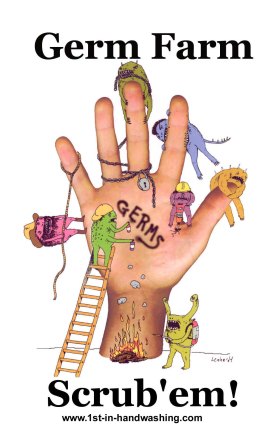I don’t get caught up in the fear factor the news media likes to generate. Being a former Infection Prevention nurse, I always look at Evidence Based Practice reports (EVP). Let’s look at the evidence on the Coronavirus.
Facts Just The Facts
The Coronavirus (CoV) is a large virus family with 7 known types.
As a zoonotic virus, CoV can be transmitted among animals and people.
Coronavirus infections are rampant in the fall or winter seasons.
For now, the only treatment options for CoV patients are supportive care and symptom relief.
The corona virus gets its name from the Latin word corona meaning crown or halo because that’s what it looks like under a microscope. I’m not going into the scientific information on the technical aspects of the virus. If you want to know more about the virus and the RNA component you can look it up. For this article, I will give you the basic facts to help you put the fear factor aside.

So, the coronavirus is not new!
Symptoms
The most common symptoms are breathing difficulty, cough, fever, and shortness of breath. In severe cases pneumonia, kidney failure, severe acute respiratory syndrome, and worst, death may develop.
The disease is transmitted by droplets such as coughing, sneezing or a person’s sputum while talking. It is also passed along by being in close personal contact. Remember, you most likely would get it by touching a contaminated surface, like shaking hands with someone infected who has coughed into their hands and not washed them.
However, touch is not the way the disease is transmitted. It’s not going to absorb through your skin. Once it’s on your hands, you would have to touch your face with the contaminate for the virus to enter your body, by touching your mouth, eyes or nose.
The KHU1, 229E, OC43, and NL63 are more common than you think. Their effects could range from mild to moderate infections like that of the common cold.
WASH YOUR HANDS!

Flu vs Corona Virus
Remember, in an average year, flu leads to about 20,000 deaths nationwide and many more hospitalizations.
As of Feb. 28, 2020, the flu has much more of an impact on Americans than COVID-19. You can find up-to-date information on COVID-19 at the Centers for Disease Control and Prevention (CDC).
COVID-19: Approximately 3,048 deaths reported worldwide; 2 deaths in the U.S., as of March 2, 2020.
Flu: 291,000 to 646,000 deaths worldwide; 12,000 to 61,000 deaths in the U.S. per year.
Both viruses are treatment by support of symptoms. Antibiotics do not work on viruses, only bacterial infections.
Past Fear Spreading
Remember the SARS-causing virus spreading to over 24 countries in Asia, Europe, North and South America. SARS cases have dwindled until there are no longer reported cases from all over the world since 2004. It too came out of China.
Then there was MERS-CoV syndrome coronavirus coming out of the Middle East. First discovered in 2012, this type of coronavirus infection was recorded to have infected around 2,500 people.
For MERS, there have been no documented human-to-human transmission or community outbreaks apart from close contacts. The main known source for MERS-CoV was dromedary camels.
Let’s not forget the Bird Flu! It goes on and on…
Prevention
Coronaviruses are sensitive to heat. Ultraviolet light, non-ionic detergents, liquid solvents, and oxidizing agents also affect the virions adversely.
Colds, flu, and coronaviruses can be prevented by frequent, thorough hand washing, coughing into the crook of your elbow, staying home when sick and limiting contact with people who are infected.
Conclusion
Don’t fall into the fear that the news media likes to cause. The paper surgical mask will not prevent you from getting a virus because they are not fit properly over your face. There are gaps where viruses can get through. The mask will only help by preventing you from putting you hands around your nose or mouth.
The most effective prevention for any virus is to WASH YOUR HANDS!


No comments